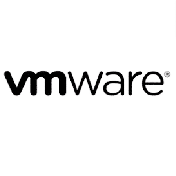Inhalt des Trainings
In diesem Training lernen erfahrene Entwickler, wie sie mit AWS-Services programmatisch interagieren können, um Web-Lösungen. Er führt Sie durch eine hochrangige Architekturdiskussion zur Ressourcenauswahl und taucht die AWS Software Development Kits (AWS SDKs) und die Befehlszeilenschnittstelle (AWS CLI) um Ihre Cloud-Anwendungen zu erstellen und bereitzustellen. In diesem Training werden Sie eine Beispielanwendung erstellen und lernen wie Sie Berechtigungen für die Entwicklungsumgebung einrichten, Geschäftslogik zur Verarbeitung von Daten mit AWS-Kernservices, die Konfiguration von Benutzerauthentifizierungen, die Bereitstellung in der AWS-Cloud und das Debuggen zur Behebung von Anwendungsproblemen. Probleme zu lösen. Das Training enthält Codebeispiele, die Ihnen helfen, die im Training besprochenen Entwurfsmuster und Lösungen zu implementieren. die im Training besprochen werden. Die Übungen vertiefen die wichtigsten Kursinhalte und helfen Ihnen bei der Implementierung von Lösungen mit das AWS SDK für Python, .Net und Java, die AWS CLI und die AWS Management Console zu implementieren. Der letzte Tag ist ein AWS Jam, ein spielerisches Ereignis, bei dem Teams um Punkte konkurrieren, indem sie eine eine Reihe von Herausforderungen nach bewährten Verfahren, die auf den im Training behandelten Konzepten basieren. Sie Sie können eine breite Palette von AWS-Services in einer Reihe von realen Szenarien erleben, die häufige Betriebs- und Fehlerbehebungsaufgaben darstellen. Das Endergebnis ist das Entwickeln, Verbessern und Validieren Ihrer Fähigkeiten in der AWS Cloud durch das Lösen von Problemen in der Praxis, das Erforschen neuer Services, Funktionen und Verstehen, wie sie zusammenarbeiten.
In this training, you will learn to:
- Build a simple end-to-end cloud application using AWS Software Development Kits (AWS SDKs), Command Line Interface (AWS CLI), and IDEs
- Configure AWS Identity and Access Management (IAM) permissions to support a development environment
- Use multiple programming patterns in your applications to access AWS services
- Use AWS SDKs to perform CRUD (create, read, update, delete) operations on Amazon Simple Storage Service (Amazon S3) and Amazon DynamoDB resources
- Build AWS Lambda functions with other service integrations for your web applications
- Understand the benefits of microservices architectures and serverless applications to design
- Develop API Gateway components and integrate with other AWS services
- Explain how Amazon Cognito controls user access to AWS resources Build a web application using Cognito to provide and control user access
- Use DevOps methodology to reduce the risks associated with traditional application releases and identify AWS services that help in implementing DevOps practices
- Use AWS Serverless Application Model (AWS SAM) to deploy an application
- Observe your application build using Amazon X-Ray
- Work in a team environment to solve real AWS use-case challenges in an AWS Jam
Microsoft
Microsoft Office
ITIL
Red Hat
Cisco
 VMware
VMwareCitrix
Unix Linux
Amazon AWS
 Oracle
OracleAutoCAD
IBM
Hewlett Packard Enterprise (HPE)
Google
Salesforce
AI – Artificial Intelligence
Automatisierung
Cloud Computing
Grafik
IT-Management
Development
Security
Netzwerk
Data Science
Soft Skills
Video Based Trainings
Nachhaltigkeit
